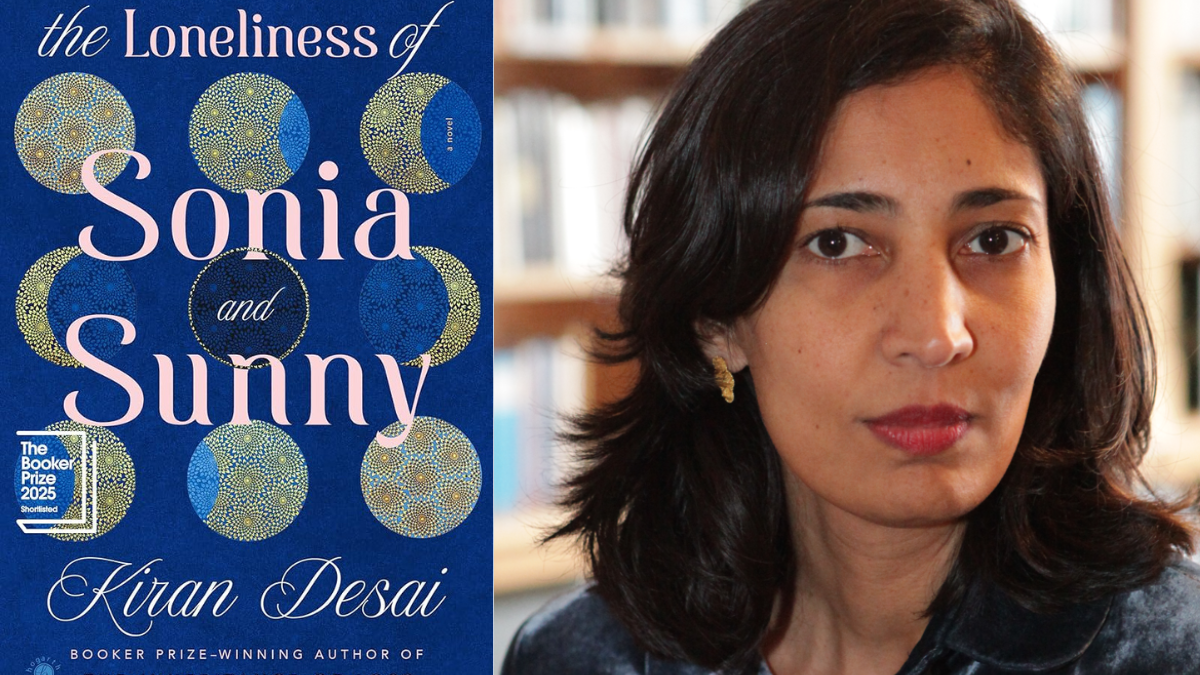In what appears to be the dedication of Steinbeck’s East of Eden, the author writes,
‘Dear Pat,
You came upon me carving some kind of little figure out of wood and you said, “Why don’t you make something for me?”
I asked you what you wanted, and you said, “A box.”
“What for?”
“To put things in.”
“What kind of things?”
“Whatever you have,” you said.
Well, here’s your box. Nearly everything I have is in it, and it is not full. Pain and excitement are in it, and feeling good or bad and evil thoughts and good thoughts- the pleasure of design and some despair and the indescribable joy of creation.
And on top of these are all the gratitude and love I have for you.
And still the box is not full.‘
The words are tender and audacious—an artist admitting that their work contains nearly everything they have. The same can be said of Kiran Desai’s The Loneliness of Sonia and Sunny, a Booker-shortlisted novel that feels like her own intricately carved box—overflowing with love, loneliness and every emotion in between with the joy of creation.
Romance, but while maintaining the ability to be oneself
As one can guess, Kiran Desai’s book is somewhat of a love-story between Sonia and Sunny, two Indians in America, (at least at the beginning) as they criss-cross out of each other’s lives. The book is as absorbing as a film. Though possibly daunting in size — it is over 700 pages, it is the sort of literature that devours you whole.
The reader can take a wild (and perhaps, inaccurate guess), that Sonia appears to be a version of Desai. When we meet her, at the beginning of the book, she is the smallest version of herself, swallowed by sadness, in a relationship with an artist and herself, a muse. The book follows almost all possible tropes, but Desai almost breaks the third wall, by acknowledging it and doing it with an enviable amount of intellect.
Race, omnipresent class and intellect in Kiran Desai’s The Loneliness of Sonia and Sunny
Sunny, her counterpart, is an Allahabadi man embodying the unease of diaspora—the sense of belonging everywhere and nowhere at once. Through him, Desai captures the layered humiliations of class and race that shape brownness in white-dominated spaces, sensations often felt before they are fully understood.
Through him, Desai captures the layered humiliations of class and race that shape brownness in white-dominated spaces, sensations often felt before they are fully understood.
Around them orbit characters as vivid as a film cast. Babita, Sunny’s eccentric and volatile mother, is among the most memorable—flawed, infuriating, and yet rendered with a compassion that makes her bleed love. Desai allows even her most unlikable characters their moments of grace. Satya, Sunny’s childhood best friend moves to rural America to pursue a medical programme — but doesn’t settle in quite as well.
When the two return to India in search of brides, Satya’s bitterness curdles; he seeks a wife who will preserve his fragile sense of masculinity. Towards the end, however, both him and his wife, Pooja are redeemed, and perhaps it reflects the idea of the human condition, that there is a Jekyll and Hyde in each one of us.
The double-edged sword of motherhood
Babita, Sunny’s mother—is the most unforgettable. A widow from Allahabad, she is vanity and vulnerability, a woman whose eccentricities mask the loneliness of a generation left behind. She meddles in her son’s life, schemes for control, and yet her motives are steeped in love. Desai writes without irony, allowing her complexity to unfold with tenderness. In one unforgettable scene, Babita’s attempts to reconcile Sunny’s American life with her own sense of moral order unravel into absurd comedy and quiet heartbreak. She is, in many ways, the novel’s moral center, the one who insists, through her contradictions, that love is never neat, and family is never simple.
If Sonia and Sunny are Desai’s explorers of the external world, Babita is her reminder of what cannot be escaped. The pull of home, the persistence of memory, the absurdity of our moral pretensions. Desai renders her with such compassion that even her most infuriating moments bleed love.
If Sonia and Sunny are Desai’s explorers of the external world, Babita is her reminder of what cannot be escaped.
Desai’s novel is full of such figures — friends, artists and intellectuals, all fully fleshed out which is no easy feat, and each one having a moment of redemption. It is a love story, a social observation and a historical reckoning.
The Loneliness of Sonia and Sunny is ambitious, intimate, and full of heart. Like Steinbeck’s box, it contains nearly everything. Love and loss, intellect and instinct, despair and design, and still, somehow, it is not full.
About the author(s)
Treya covers art, culture, climate and the environment. She has aspired to be a journalist ever since she was little. She has reported for The Hindu and Deccan Chronicle among others and explores how feminism takes root in everyday life by leading sessions with young people on gender, digital safety and the "good girl" syndrome.








